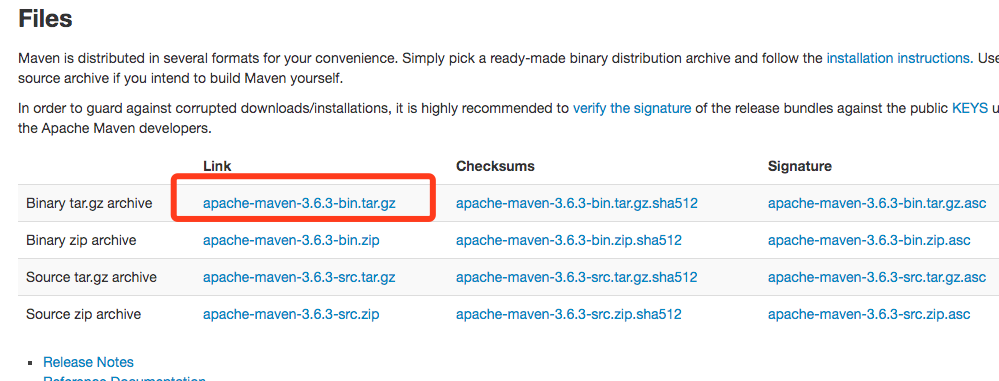从零搭建 Spring Boot 后端项目(四)
简介
这一小节主要是,整合 Spring Security
步骤
新建数据库与表
Create DATABASE `backend_template`;USE backend_template;CREATE TABLE `user` (`id` bigint(11) NOT NULL AUTO_INCREMENT,`username` varchar(255) NOT NULL,`password` varchar(255) NOT NULL,PRIMARY KEY (`id`));CREATE TABLE `role` (`id` bigint(11) NOT NULL AUTO_INCREMENT,`name` varchar(255) NOT NULL,PRIMARY KEY (`id`));CREATE TABLE `user_role` (`user_id` bigint(11) NOT NULL,`role_id` bigint(11) NOT NULL);CREATE TABLE `role_permission` (`role_id` bigint(11) NOT NULL,`permission_id` bigint(11) NOT NULL);CREATE TABLE `permission` (`id` bigint(11) NOT NULL AUTO_INCREMENT,`url` varchar(255) NOT NULL,`name` varchar(255) NOT NULL,`description` varchar(255) NULL,`pid` bigint(11) NOT NULL,PRIMARY KEY (`id`));INSERT INTO user (id, username, password) VALUES (1,'user','e10adc3949ba59abbe56e057f20f883e');INSERT INTO user (id, username , password) VALUES (2,'admin','e10adc3949ba59abbe56e057f20f883e');INSERT INTO role (id, name) VALUES (1,'USER');INSERT INTO role (id, name) VALUES (2,'ADMIN');INSERT INTO permission (id, url, name, pid) VALUES (1,'/user/common','common',0);INSERT INTO permission (id, url, name, pid) VALUES (2,'/user/admin','admin',0);INSERT INTO user_role (user_id, role_id) VALUES (1, 1);INSERT INTO user_role (user_id, role_id) VALUES (2, 1);INSERT INTO user_role (user_id, role_id) VALUES (2, 2);INSERT INTO role_permission (role_id, permission_id) VALUES (1, 1);INSERT INTO role_permission (role_id, permission_id) VALUES (2, 1);INSERT INTO role_permission (role_id, permission_id) VALUES (2, 2);
修改
application-dev.properties配置文件中连接数据库为backend_template,此时就可以把test数据库删了,因为第三篇还要连接所以之前没让删spring.datasource.druid.url=jdbc //127.0.0.1:3306/backend_template?useUnicode=true&characterEncoding=utf-8&useSSL=false&allowPublicKeyRetrieval=true
//127.0.0.1:3306/backend_template?useUnicode=true&characterEncoding=utf-8&useSSL=false&allowPublicKeyRetrieval=true
在
pom.xml中新增以下两个依赖<!-- Spring Security --><dependency><groupId>org.springframework.boot</groupId><artifactId>spring-boot-starter-security</artifactId><version>2.3.1.RELEASE</version></dependency><!-- thymeleaf --><dependency><groupId>org.springframework.boot</groupId><artifactId>spring-boot-starter-thymeleaf</artifactId><version>2.3.1.RELEASE</version></dependency>
在com.example.backend_template.entity下新建User类
package com.example.backend_template.entity;import org.springframework.security.core.userdetails.UserDetails;import java.io.Serializable;import java.util.List;/*** @ClassName User* @Description* @Author L* @Date Create by 2020/6/28*/public class User implements UserDetails, Serializable {private Long id;private String username;private String password;private List<Role> authorities;public Long getId() {return id;}public void setId(Long id) {this.id = id;}@Overridepublic String getUsername() {return username;}public void setUsername(String username) {this.username = username;}@Overridepublic String getPassword() {return password;}public void setPassword(String password) {this.password = password;}@Overridepublic List<Role> getAuthorities() {return authorities;}public void setAuthorities(List<Role> authorities) {this.authorities = authorities;}/*** 用户帐号是否未过期** @return*/@Overridepublic boolean isAccountNonExpired() {return true;}/*** 用户帐号是否未锁定** @return*/@Overridepublic boolean isAccountNonLocked() {return true;}/*** 用户密码是否未过期** @return*/@Overridepublic boolean isCredentialsNonExpired() {return true;}/*** 用户是否可用** @return*/@Overridepublic boolean isEnabled() {return true;}}
上面的 User 类实现了 UserDetails 接口,该接口是实现Spring Security 认证信息的核心接口。其中 getUsername 方法为 UserDetails 接口 的方法,这个方法返回 username,也可以是其他的用户信息,例如手机号、邮箱等。getAuthorities() 方法返回的是该用户设置的权限信息,在本实例中,从数据库取出用户的所有角色信息,权限信息也可以是用户的其他信息,不一定是角色信息。另外需要读取密码,最后几个方法一般情况下都返回 true,也可以根据自己的需求进行业务判断。
在com.example.backend_template.entity下新建Role类
package com.example.backend_template.entity;import org.springframework.security.core.GrantedAuthority;/*** @ClassName Role* @Description* @Author L* @Date Create by 2020/6/28*/public class Role implements GrantedAuthority {private Long id;private String name;public Long getId() {return id;}public void setId(Long id) {this.id = id;}public String getName() {return name;}public void setName(String name) {this.name = name;}@Overridepublic String getAuthority() {return name;}}
Role 类实现了 GrantedAuthority 接口,并重写 getAuthority() 方法。权限点可以为任何字符串,不一定非要用角色名。
AuthenticationManager会设置到一个GrantedAuthority列表到Authentication对象中保存,GrantedAuthority列表表示用户所具有的权限,AccessDecisionManager将从Authentication中获取用户的GrantedAuthority来鉴定用户是否具有访问权限。在com.example.backend_template.dao下新建UserDao接口
package com.example.backend_template.dao;import com.example.backend_template.entity.User;import org.apache.ibatis.annotations.Mapper;import org.apache.ibatis.annotations.Param;/*** @ClassName UserDao* @Description* @Author L* @Date Create by 2020/6/28*/@Mapperpublic interface UserDao {/*** 通过用户名加载用户** @param userName* @return*/User findByUsername(@Param("userName") String userName);}
在
resources/mapper下新建UserDao.xml文件<?xml version="1.0" encoding="UTF-8" ?><!DOCTYPE mapperPUBLIC "-//mybatis.org//DTD Mapper 3.0//EN""http://mybatis.org/dtd/mybatis-3-mapper.dtd"><mapper namespace="com.example.backend_template.dao.UserDao"><select id="findByUsername" parameterType="string" resultType="com.example.backend_template.entity.User">SELECT * FROM user u WHERE u.username = #{userName}</select></mapper>
在com.example.backend_template.dao下新建RoleDao接口
package com.example.backend_template.dao;import com.example.backend_template.entity.Role;import org.apache.ibatis.annotations.Mapper;import org.springframework.data.repository.query.Param;import java.util.List;/*** @ClassName RoleDao* @Description* @Author L* @Date Create by 2020/6/28*/@Mapperpublic interface RoleDao {/*** 通过用户ID查找用户角色** @param userId* @return*/List<Role> findByUserId(@Param("userId") Long userId);}
在
resources/mapper下新建RoleDao.xml文件<?xml version="1.0" encoding="UTF-8" ?><!DOCTYPE mapperPUBLIC "-//mybatis.org//DTD Mapper 3.0//EN""http://mybatis.org/dtd/mybatis-3-mapper.dtd"><mapper namespace="com.example.backend_template.dao.RoleDao"><select id="findByUserId" parameterType="Long" resultType="com.example.backend_template.entity.Role">SELECT * FROM role r WHERE r.id IN (SELECT ur.role_id FROM user_role ur WHERE ur.user_id = #{userId} )</select></mapper>
在com.example.backend_template.dao下新建PermissionDao接口
package com.example.backend_template.dao;import org.apache.ibatis.annotations.Mapper;import java.util.List;import java.util.Map;/*** @ClassName PermissionDao* @Description* @Author L* @Date Create by 2020/6/29*/@Mapperpublic interface PermissionDao {List<Map<String, String>> findRoleAndPermissions();}
在
resources/mappers下新建PermissionDao.xml文件<?xml version="1.0" encoding="UTF-8" ?><!DOCTYPE mapperPUBLIC "-//mybatis.org//DTD Mapper 3.0//EN""http://mybatis.org/dtd/mybatis-3-mapper.dtd"><mapper namespace="com.example.backend_template.dao.PermissionDao"><select id="findRoleAndPermissions" resultType="java.util.HashMap">SELECT R.name,P.url FROM role AS R LEFT JOIN role_permission RP ON R.id=RP.role_id LEFT JOIN permission AS P ON RP.permission_id=P.id</select></mapper>
- 并在
BackendTemplateApplication启动类中添加@MapperScan("com.example.backend_template.dao")注解,如之前未删除则不再添加 在com.example.backend_template.security下新建UserDetailsServiceImpl类
package com.example.backend_template.security;import com.example.backend_template.dao.RoleDao;import com.example.backend_template.dao.UserDao;import com.example.backend_template.entity.Role;import com.example.backend_template.entity.User;import org.springframework.beans.factory.annotation.Autowired;import org.springframework.security.core.userdetails.UserDetails;import org.springframework.security.core.userdetails.UserDetailsService;import org.springframework.security.core.userdetails.UsernameNotFoundException;import org.springframework.stereotype.Service;import java.util.List;/*** @ClassName UserDetailsService* @Description* @Author L* @Date Create by 2020/6/29*/@Servicepublic class UserDetailsServiceImpl implements UserDetailsService {@Autowiredprivate UserDao userDao;@Autowiredprivate RoleDao roleDao;@Overridepublic UserDetails loadUserByUsername(String userName) throws UsernameNotFoundException {//查数据库,查找到用户名对应的所有角色,并注入user中User user = userDao.findByUsername(userName);if (user != null) {List<Role> roles = roleDao.findByUserId(user.getId());user.setAuthorities(roles);}return user;}}
在com.example.backend_template.security下新建InvocationSecurityMetadataSourceServiceImpl类
package com.example.backend_template.security;import com.example.backend_template.dao.PermissionDao;import org.springframework.beans.factory.annotation.Autowired;import org.springframework.security.access.ConfigAttribute;import org.springframework.security.access.SecurityConfig;import org.springframework.security.web.FilterInvocation;import org.springframework.security.web.access.intercept.FilterInvocationSecurityMetadataSource;import org.springframework.security.web.util.matcher.AntPathRequestMatcher;import org.springframework.stereotype.Component;import javax.servlet.http.HttpServletRequest;import java.util.*;/*** @ClassName InvocationSecurityMetadataSourceServiceImpl* @Description* @Author L* @Date Create by 2020/6/29*/@Componentpublic class InvocationSecurityMetadataSourceServiceImpl implements FilterInvocationSecurityMetadataSource {@Autowiredprivate PermissionDao permissionDao;/*** 每一个资源所需要的角色 Collection<ConfigAttribute>决策器会用到*/private static HashMap<String, Collection<ConfigAttribute>> map = null;/*** 返回请求的资源需要的角色** @param o* @return* @throws IllegalArgumentException*/@Overridepublic Collection<ConfigAttribute> getAttributes(Object o) throws IllegalArgumentException {//object 中包含用户请求的request 信息HttpServletRequest request = ((FilterInvocation) o).getHttpRequest();for (Iterator<String> it = map.keySet().iterator(); it.hasNext(); ) {String url = it.next();if (new AntPathRequestMatcher(url).matches(request)) {return map.get(url);}}return null;}@Overridepublic Collection<ConfigAttribute> getAllConfigAttributes() {//初始化 所有资源 对应的角色loadResourceDefine();return null;}@Overridepublic boolean supports(Class<?> aClass) {return true;}/*** 初始化 所有资源 对应的角色*/public void loadResourceDefine() {map = new HashMap<>(16);//查出结果为角色和对应URL的集合List<Map<String, String>> roleAndPermissions = permissionDao.findRoleAndPermissions();//某个资源可以被哪些角色访问for (Map<String, String> roleAndPermission : roleAndPermissions) {String roleName = roleAndPermission.get("name");String url = roleAndPermission.get("url");ConfigAttribute role = new SecurityConfig(roleName);if (map.containsKey(url)) {map.get(url).add(role);} else {List<ConfigAttribute> list = new ArrayList<>();list.add(role);map.put(url, list);}}}}
InvocationSecurityMetadataSourceServiceImpl 类实现了 FilterInvocationSecurityMetadataSource,FilterInvocationSecurityMetadataSource 的作用是用来储存请求与权限的对应关系。
FilterInvocationSecurityMetadataSource接口有3个方法:
boolean supports(Class<?> clazz):指示该类是否能够为指定的方法调用或Web请求提供ConfigAttributes。
Collection getAllConfigAttributes():Spring容器启动时自动调用, 一般把所有请求与权限的对应关系也要在这个方法里初始化, 保存在一个属性变量里。
Collection getAttributes(Object object):当接收到一个http请求时, filterSecurityInterceptor会调用的方法. 参数object是一个包含url信息的HttpServletRequest实例. 这个方法要返回请求该url所需要的所有权限集合在com.example.backend_template.security下新建AccessDecisionManagerImpl类
package com.example.backend_template.security;import org.springframework.security.access.AccessDecisionManager;import org.springframework.security.access.AccessDeniedException;import org.springframework.security.access.ConfigAttribute;import org.springframework.security.authentication.InsufficientAuthenticationException;import org.springframework.security.core.Authentication;import org.springframework.security.core.GrantedAuthority;import org.springframework.stereotype.Component;import java.util.Collection;import java.util.Iterator;/*** @ClassName AccessDecisionManagerImpl* @Description* @Author L* @Date Create by 2020/6/30*/@Componentpublic class AccessDecisionManagerImpl implements AccessDecisionManager {/*** 通过传递的参数来决定用户是否有访问对应受保护对象的权限** @param authentication 包含了当前的用户信息,包括拥有的权限。这里的权限来源就是前面登录时UserDetailsService中设置的authorities。* @param object 就是FilterInvocation对象,可以得到request等web资源* @param configAttributes configAttributes是本次访问需要的权限*/@Overridepublic void decide(Authentication authentication, Object object, Collection<ConfigAttribute> configAttributes) throws AccessDeniedException, InsufficientAuthenticationException {if (configAttributes == null || configAttributes.size() <= 0) {return;} else {String needRole;for (Iterator<ConfigAttribute> iterator = configAttributes.iterator(); iterator.hasNext(); ) {needRole = iterator.next().getAttribute();for (GrantedAuthority ga : authentication.getAuthorities()) {if (needRole.trim().equals(ga.getAuthority().trim())) {return;}}}}throw new AccessDeniedException("当前没有访问权限!");}/*** 表示此AccessDecisionManager是否能够处理传递的ConfigAttribute呈现的授权请求** @param configAttribute* @return*/@Overridepublic boolean supports(ConfigAttribute configAttribute) {return true;}/*** 表示当前AccessDecisionManager实现是否能够为指定的安全对象(方法调用或Web请求)提供访问控制决策** @param aClass* @return*/@Overridepublic boolean supports(Class<?> aClass) {return true;}}
AccessDecisionManagerImpl 类实现了AccessDecisionManager接口,AccessDecisionManager是由AbstractSecurityInterceptor调用的,它负责鉴定用户是否有访问对应资源(方法或URL)的权限。
在com.example.backend_template.security下新建FilterSecurityInterceptorImpl类
package com.example.backend_template.security;import org.springframework.beans.factory.annotation.Autowired;import org.springframework.security.access.SecurityMetadataSource;import org.springframework.security.access.intercept.AbstractSecurityInterceptor;import org.springframework.security.access.intercept.InterceptorStatusToken;import org.springframework.security.web.FilterInvocation;import org.springframework.security.web.access.intercept.FilterInvocationSecurityMetadataSource;import org.springframework.stereotype.Component;import javax.servlet.*;import java.io.IOException;/*** @ClassName FilterSecurityInterceptorImpl* @Description* @Author L* @Date Create by 2020/6/30*/@Componentpublic class FilterSecurityInterceptorImpl extends AbstractSecurityInterceptor implements Filter {@Autowiredprivate FilterInvocationSecurityMetadataSource securityMetadataSource;@Autowiredpublic void setAccessDecisionManagerImpl(AccessDecisionManagerImpl accessDecisionManagerImpl) {super.setAccessDecisionManager(accessDecisionManagerImpl);}@Overridepublic void doFilter(ServletRequest servletRequest, ServletResponse servletResponse, FilterChain filterChain) throws IOException, ServletException {FilterInvocation fi = new FilterInvocation(servletRequest, servletResponse, filterChain);invoke(fi);}public void invoke(FilterInvocation fi) throws IOException, ServletException {InterceptorStatusToken token = super.beforeInvocation(fi);try {//执行下一个拦截器fi.getChain().doFilter(fi.getRequest(), fi.getResponse());} finally {super.afterInvocation(token, null);}}@Overridepublic Class<?> getSecureObjectClass() {return FilterInvocation.class;}@Overridepublic SecurityMetadataSource obtainSecurityMetadataSource() {return this.securityMetadataSource;}}
每种受支持的安全对象类型(方法调用或Web请求)都有自己的拦截器类,它是AbstractSecurityInterceptor的子类,AbstractSecurityInterceptor 是一个实现了对受保护对象的访问进行拦截的抽象类。
AbstractSecurityInterceptor中的方法说明:
beforeInvocation()方法实现了对访问受保护对象的权限校验,内部用到了AccessDecisionManager和AuthenticationManager;
finallyInvocation()方法用于实现受保护对象请求完毕后的一些清理工作,主要是如果在beforeInvocation()中改变了SecurityContext,则在finallyInvocation()中需要将其恢复为原来的SecurityContext,该方法的调用应当包含在子类请求受保护资源时的finally语句块中。
afterInvocation()方法实现了对返回结果的处理,在注入了AfterInvocationManager的情况下默认会调用其decide()方法。
了解了AbstractSecurityInterceptor,就应该明白了,我们自定义FilterSecurityInterceptorImpl就是想使用我们之前自定义的 AccessDecisionManager 和 securityMetadataSource。在com.example.backend_template.security下新建SecurityConfig类
package com.example.backend_template.security;import org.springframework.beans.factory.annotation.Autowired;import org.springframework.context.annotation.Configuration;import org.springframework.security.config.annotation.authentication.builders.AuthenticationManagerBuilder;import org.springframework.security.config.annotation.web.builders.HttpSecurity;import org.springframework.security.config.annotation.web.configuration.EnableWebSecurity;import org.springframework.security.config.annotation.web.configuration.WebSecurityConfigurerAdapter;import org.springframework.security.crypto.password.PasswordEncoder;import org.springframework.util.DigestUtils;/*** @ClassName SecurityConfig* @Description* @Author L* @Date Create by 2020/6/30*/@Configuration@EnableWebSecuritypublic class SecurityConfig extends WebSecurityConfigurerAdapter {@Autowiredprivate UserDetailsServiceImpl userService;@Autowiredpublic void configureGlobal(AuthenticationManagerBuilder auth) throws Exception {//校验用户auth.userDetailsService(userService).passwordEncoder(new PasswordEncoder() {//对密码进行加密@Overridepublic String encode(CharSequence charSequence) {return DigestUtils.md5DigestAsHex(charSequence.toString().getBytes());}//对密码进行判断匹配@Overridepublic boolean matches(CharSequence charSequence, String s) {String encode = DigestUtils.md5DigestAsHex(charSequence.toString().getBytes());boolean res = s.equals(encode);return res;}});}@Overrideprotected void configure(HttpSecurity http) throws Exception {http.authorizeRequests().antMatchers("/", "/index", "/login", "/login-error", "/401").permitAll().anyRequest().authenticated().and().formLogin().loginPage("/login").failureUrl("/login-error").and().exceptionHandling().accessDeniedPage("/401");http.logout().logoutSuccessUrl("/");}}
@EnableWebSecurity注解以及WebSecurityConfigurerAdapter一起配合提供基于web的security。自定义类继承了WebSecurityConfigurerAdapter来重写了一些方法来指定一些特定的Web安全设置
测试
在com.example.backend_template.controller下新建SecurityController类
package com.example.backend_template.controller;import org.springframework.stereotype.Controller;import org.springframework.ui.Model;import org.springframework.web.bind.annotation.GetMapping;import org.springframework.web.bind.annotation.RequestMapping;/*** @ClassName SecurityController* @Description* @Author L* @Date Create by 2020/6/30*/@Controllerpublic class SecurityController {@RequestMapping("/")public String root() {return "redirect:/index";}@RequestMapping("/index")public String index() {return "index";}@RequestMapping("/login")public String login() {return "login";}@RequestMapping("/login-error")public String loginError(Model model) {model.addAttribute( "loginError" , true);return "login";}@GetMapping("/401")public String accessDenied() {return "401";}@GetMapping("/user/common")public String common() {return "user/common";}@GetMapping("/user/admin")public String admin() {return "user/admin";}}
在
resources/templates下新建401.html<!DOCTYPE html><html lang="en"><head><meta charset="UTF-8"><title>401 page</title></head><body><div><div><h2>权限不够</h2><p>拒绝访问!</p></div></div></body></html>
在
resources/templates下新建index.html<!DOCTYPE html><html lang="en" xmlns:th="http://www.thymeleaf.org"><head><head><meta charset="UTF-8"><title>首页</title></head><body><h2>page list</h2><a href="/user/common">common page</a><br/><a href="/user/admin">admin page</a><br/><form th:action="@{/logout}" method="post"><input type="submit" class="btn btn-primary" value="注销"/></form></body></html>
在
resources/templates下新建login.html<!DOCTYPE html><html xmlns="http://www.w3.org/1999/xhtml" xmlns:th="http://www.thymeleaf.org"><head><meta charset="UTF-8"><title>登录</title></head><body><h1>Login page</h1><p th:if="${loginError}" class="error">用户名或密码错误</p><form th:action="@{/login}" method="post"><label for="username">用户名</label>:<input type="text" id="username" name="username" autofocus="autofocus" /><br/><label for="password">密 码</label>:<input type="password" id="password" name="password" /><br/><input type="submit" value="登录" /></form><p><a href="/index" th:href="@{/index}"></a></p></body></html>
首先在resources/templates下新建user文件夹,然后在
resources/templates/user下新建admin.html<!DOCTYPE html><head><meta charset="UTF-8"><title>admin page</title></head><body>success admin page!!!</body></html>
在
resources/templates/user下新建common.html<!DOCTYPE html><head><meta charset="UTF-8"><title>common page</title></head><body>success common page!!!</body></html>
- 启动项目,并用浏览器访问 http://localhost:8080/index 并选择
common page
- 输入用户名:”user“,密码:”123456“,出现以下界面,说明登陆成功

- 接着访问 http://localhost:8080/user/admin ,会出现以下界面,因为user用户没有权力访问
/user/admin界面,必须用admin帐号才能访问
如成功出现以上所有结果,则Spring Security 整合成功
项目地址
项目介绍:从零搭建 Spring Boot 后端项目
代码地址:https://github.com/xiaoxiamo/backend-template
下一篇
五、整合Swagger2



































还没有评论,来说两句吧...